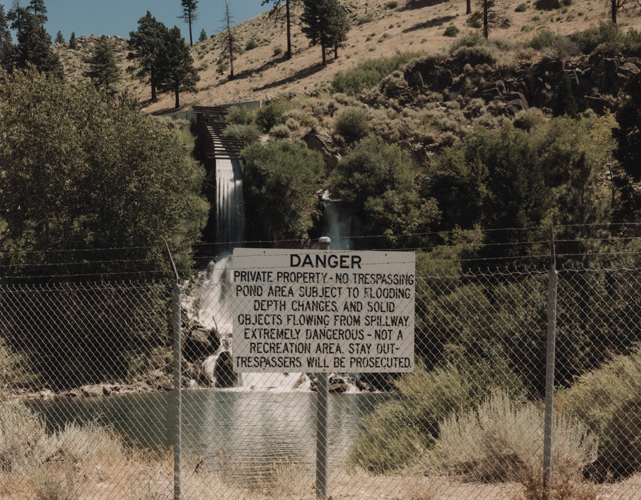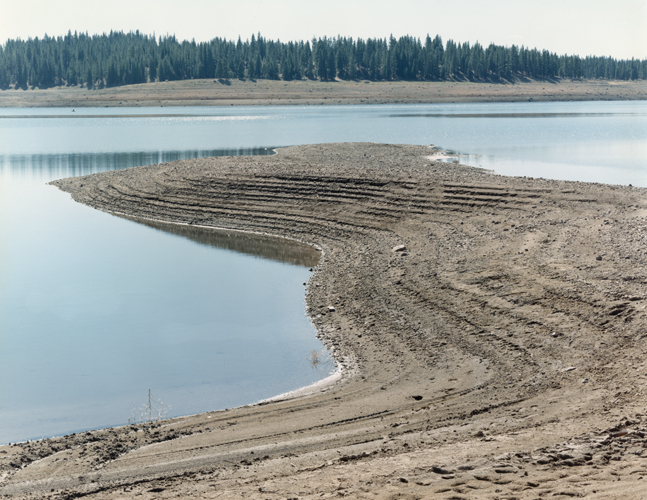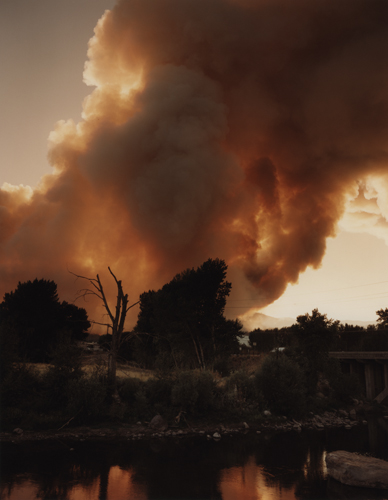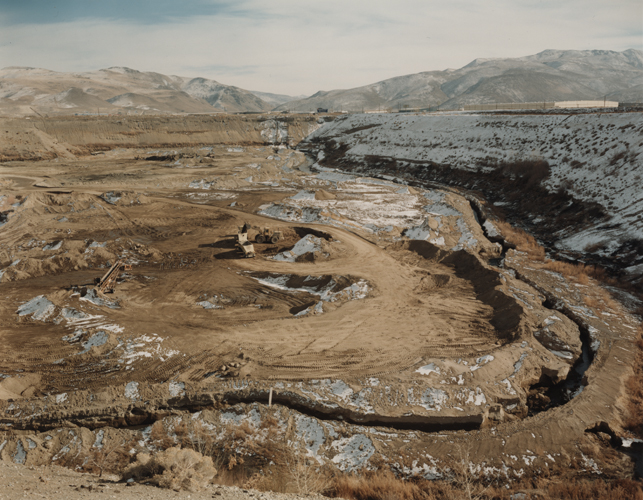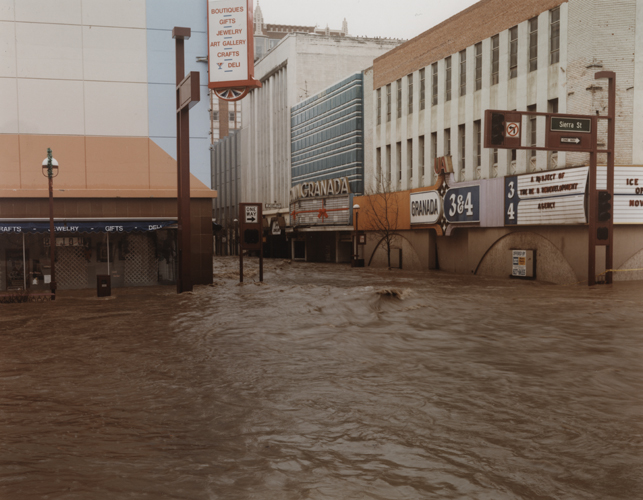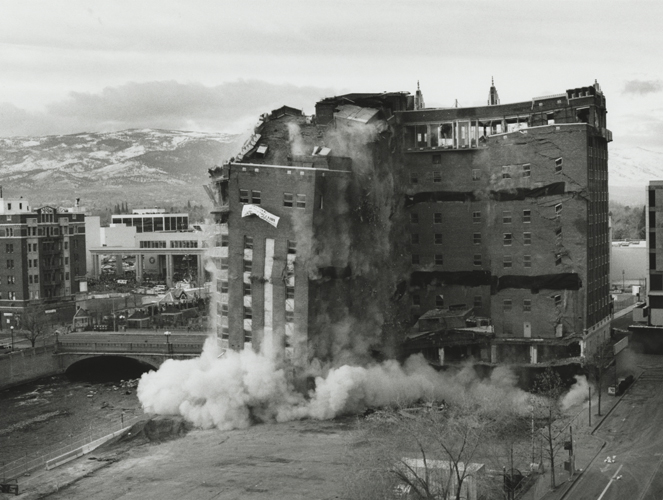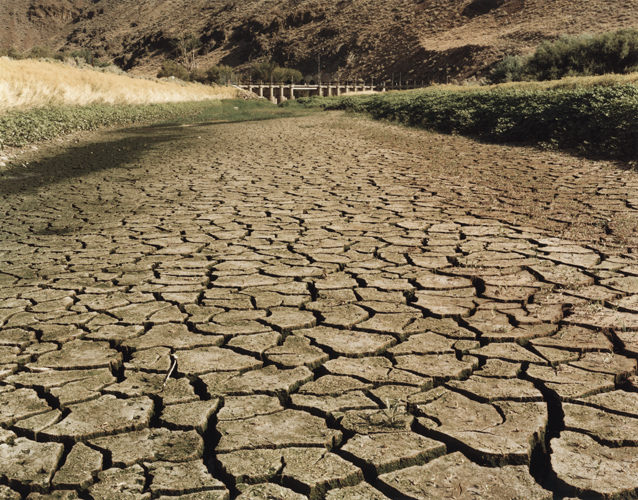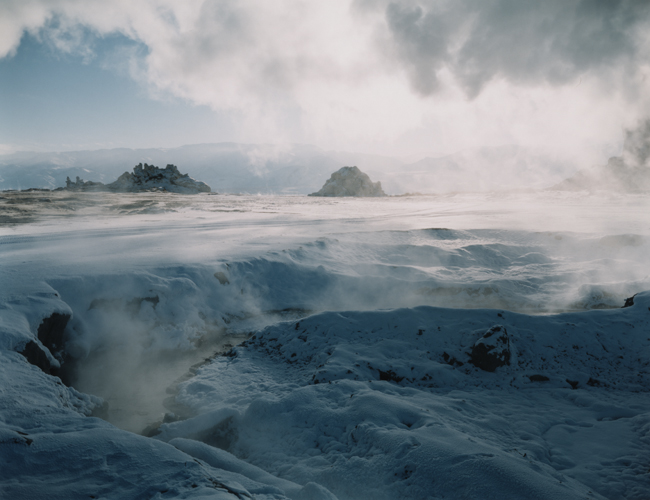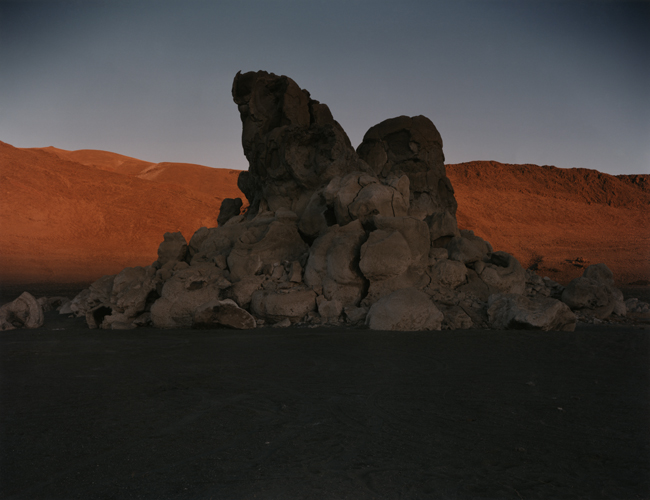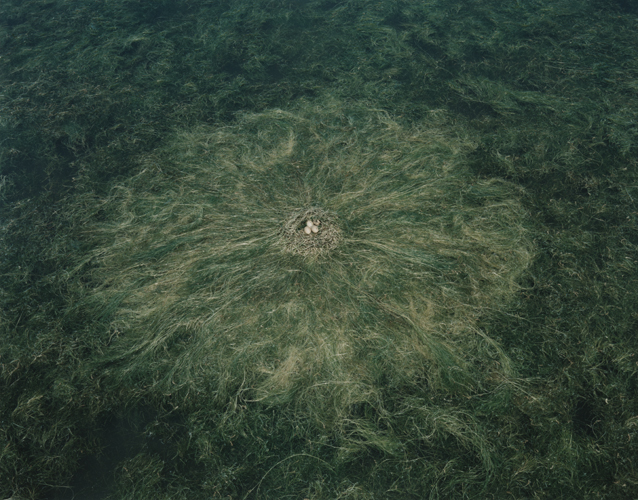A Doubtful River by Peter Goin
Water in the American West is sprayed from ornamental fountains, recycled through human made waterfalls, and generated as ocean waves in land-locked wild water oases. A charitable visitor might believe water is plentiful. Yet aridity is inescapable, at least in the Great Basin, which includes portions of Idaho, Nevada, Oregon, and Utah. Faced with the vastness of brown mountain ranges and a horizon tainted with industrialized air, we can no longer sustain the illusion of plentiful water. The urban and agricultural areas located in this Great Basin region of western Nevada depend primarily upon unpredictable snow pack in surrounding mountain ranges and on rivers that flood or, at times, run dry. While western states' populations grow at phenomenal rates, the ancient and irreplaceable waters in the aquifers are depleted to serve the ever-increasing thirst of new development. The Truckee River, a modest and shallow river on the eastern slope of the Sierra Nevada, like many other western rivers, has been over-subscribed for decades. This river, the life-support for more than 300,000 people living in western Nevada, is threatened by an annual increase in urban population, measuring consistently at nearly eight percent.
The Truckee River was the first western river to be altered by the U.S. government for irrigation. The Truckee River is dammed, diverted, and divided to quench the thirst of its many users: recreationalists and power generators in Nevada and California, the Pyramid Lake Paiute Tribe, residents of the Truckee Meadows, farmers in western Nevada, and state and federal fish and wildlife agencies. Derby Dam, which diverts the Truckee, was built in 1905. This visually modest dam is steeped in symbolism, since its origins can be found in the Jeffersonian ideal of an agrarian democracy. The federally-funded Newlands Project, as this irrigation scheme is known, inaugurated a century of dissension and turmoil despite its publicly stated noble intentions. As the Jeffersonian premise of 160 acres--to provide food, shelter, and prosperity--encountered the alkali landscape, the harsh reality of desert farming emerged. Selenium salts and arsenic drain from irrigated lands into the Stillwater Wildlife Refuge, threatening this major Pacific flyway. Poor soil characteristics limit crop choices, regardless of water volume. Dry years reduce agreed upon allocations, regardless of need or legal standing.
Since the first diversion in 1906, Pyramid Lake, where the Truckee River ends, has lost more than 45 feet of vertical shoreline, threatening vital rookeries and wildlife habitats. The Pyramid Lake Paiute Tribe, its members historically gatherers, fishers, and protectors of Pyramid Lake, have been entangled for nearly a century seeking redress for the lost water. Lying to the east of Pyramid Lake is Winnemucca Lake; this sister lake, almost as long as Pyramid Lake but only half as wide, used to fill with Pyramid Lake's seasonal overflow and was a key staging area for migratory waterfowl. Once 87 feet deep, Winnemucca Lake dried up after the waters of the Truckee were diverted at Derby Dam. While Winnemucca Lake was made a National Wildlife Refuge in 1936, some thirty years after the start of water diversions, refuge status was abandoned in 1962 when officials realized it would never refill. In the 1950s and 1960s and for brief intervals in the 1980's and 1990's, Winnemucca Lake intermittently held water, but it is now a dry alkali lake bed. The Stillwater National Wildlife Refuge and Management Area lies at the terminus point of diverted waters from the Truckee. To the north and east of Fallon ranches, this major wetland site endured low water due to prolonged drought and reduced Truckee River diversions. Stillwater also suffered higher levels of toxic contamination due to selenium and boron in farm water draining through the ancient lake bed sediments. In recent wet winters (1994-99), Stillwater enjoys a reprieve. Yet, wetland acreage at times totals less than five per cent of pre-European settlement ages. This crucial natural resource's survival depends on negotiated settlements between radically different communities. [Peter Goin]
[note: In 1994, the Library of Congress in Washington, D.C. collected an entire set of 530 images from the Truckee River/Pyramid Lake Project for their permanent collection, and selected images were included in the Library of Congress's publication on their collection, Eyes of the Nation.]
A Doubtful River. Robert Dawson, Peter Goin, Mary Webb. (Reno: University of Nevada Press, 2000). [Wilbur S. Shepperson Book Award, Nevada Humanities]
